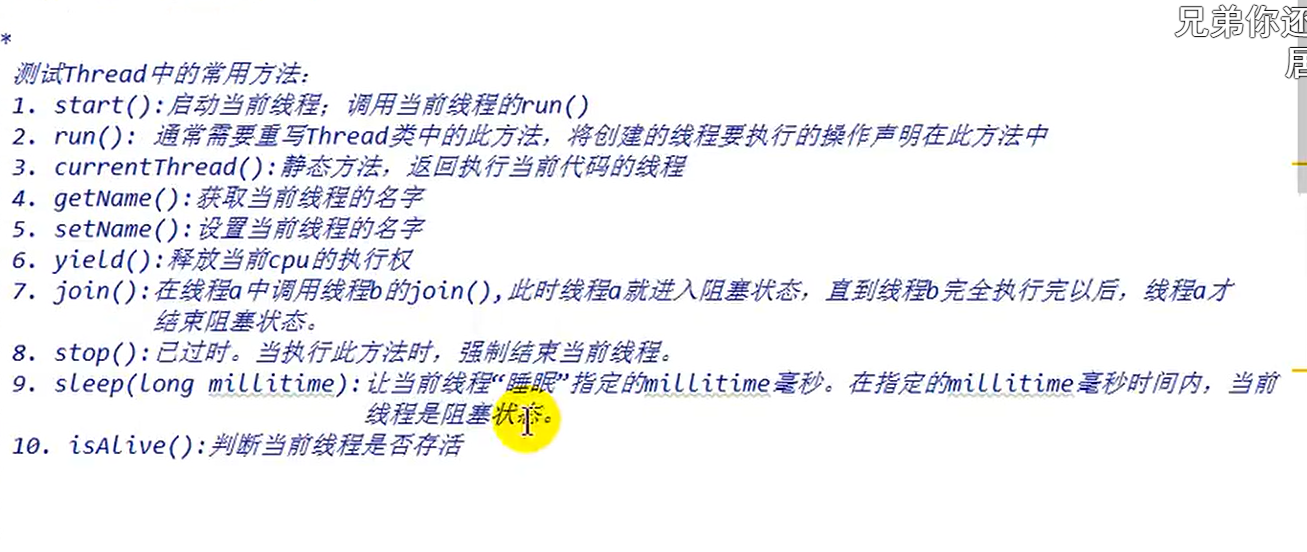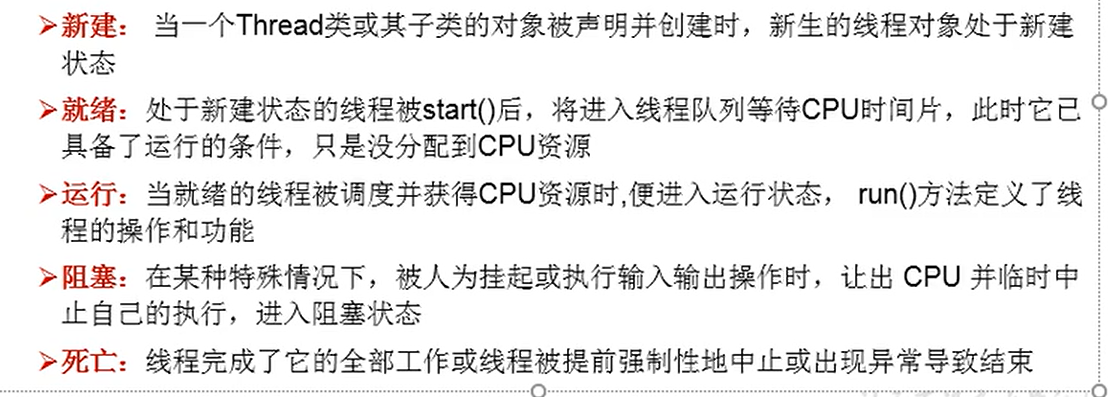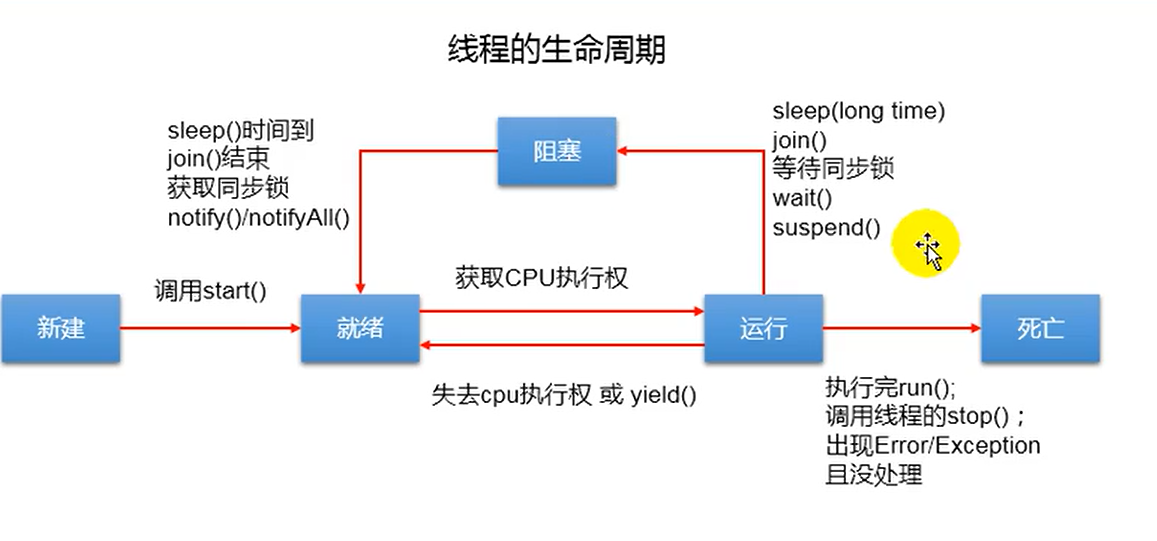1: Abnormal
1. Concept
It is divided into error and Exception. Error is generally handled without writing code
Exception classification:
Compile time exception (checked): IOException (FileNotFound), ClassNotFound (class not found)
Run time exception (unchecked): null pointer, footmark out of bounds, wrong value type, ClassCast, etc
2. Exception handling
try catch :
try the part where an exception may occur, and the part after the exception will not be executed;
catch exception type object, you can use object. getMessage(), object. printStackTrace() to get exception information; If the exception type has a child parent relationship, the child class should be above and the parent class should be below
finally, the part that must be executed is generally used for resource shutdown
Throws: if there is a child parent relationship, the exception of the child class throws < the exception of the parent class throws is required
3. Throw an exception manually
throw new exception type ("message")
2: Thread
1. Basic concepts
Unique to each thread: virtual machine stack, program counter
Threads share: common memory unit / memory address is the same - > allocate memory in the same heap - > access the same variables and objects
2.1. Thread creation method 1: inherit thread
Procedure: rewrite the run () method, create a class object and start the thread with the object. start(); Creating multiple threads requires new multiple objects
method:

public class pra01 {
public static void main(String[] args) {
//Thread creation mode 1:
myThread myThread = new myThread();
myThread.start();
//The constructor sets the thread name
finalstu.myThread special= new myThread("Special thread");
//Main thread execution
for (int i=0;i<100;i++){
if (i%2 !=0)
System.out.println(Thread.currentThread().getName()+i);
if (i==20)
try {
myThread.join();//The current thread is blocked. The myThread thread will not be released until the myThread thread is executed,
} catch (InterruptedException e) {
e.printStackTrace();
}
}
}
}
class myThread extends Thread{
@Override
public void run() {
for (int i=0;i<100;i++){
if (i%2 == 0)
try {
sleep(100);//You can only try catch because the run method of the parent class does not have throws sleep, which can only be used in the thread class
} catch (InterruptedException e) {
e.printStackTrace();
}
System.out.println(getName()+i);
if (i%20 ==0)
this.yield();//Release current execution rights
}
}
public myThread(){
super();
}
public myThread(String str){
super();
setName(str);
}
}2.2. Thread creation method 2: implement Runnable interface
Procedure: the implementation class rewrites the run () method; New implements the class object m, new Thread object T, and puts the implementation class object into the constructor; Call the t.start() method to start the thread;
If the Runnable interface object in the Thread is not empty, call the run method of the interface, that is, the run method of the implementation class
3. Thread priority
getPriority(): returns the thread priority value
Setpriority (int newpriority): change thread priority
MAX_PRIORITY:10
NORM_ Priority: 5 (default priority)
MIN_PRIORITY:1
The subclass can inherit the priority of the parent class. The priority is only a probability problem, and the higher priority is not scheduled first
4. Thread life cycle


5 thread synchronization
Sync code block:
Synchronized {code to be synchronized}
Synchronization monitor (lock). Any class object can be used as a lock, but the locks of multiple threads must be the same
Inherit Thread class: class name. Class
Implementation interface class: this, because multiple threads share one implementation class object
Synchronization method:
public synchronized void show() {/ / content to be synchronized}
Synchronization monitor: this, so the static synchronized method should be written in the inheritance Thread mode to make the synchronization monitor become a class name. Class
Synchronous lock:
Instantiate ReentrantLock in the implementation class: private ReentrantLock lock lock = new ReentrantLock();
Try {lock. Lock(); / / call the lock method to get the synchronization monitor
Content to be synchronized}
Finally {lock. Unlock(); / / call the unlock method
6. Thread alternation
Written in the run method:
wait(); / / the current thread can enter the blocking state, which must be used in the synchronization code block or synchronization method
//Release the synchronization monitor at the same time
//wait() notify() notifyAll() are in the Object class
notify(); / / wake up another blocked thread and get the synchronization monitor for the current thread. If multiple threads are blocked, wake up the thread with high priority
public class pra02 {
public static void main(String[] args) {
MThread mThread = new MThread();
//The same object and three threads share the structure in mThread
Thread t1 = new Thread(mThread);
Thread t2 = new Thread(mThread);
Thread t3 = new Thread(mThread);
t1.start();//If the Runnable interface object in the Thread is not empty, call the run method of the interface, that is, the run method of the implementation class
t2.start();
t3.start();
}
}
class MThread implements Runnable {
private int i = 100;
@Override
public void run() {
synchronized (this) {//If it inherits the thread class, the synchronization lock uses the class name. Class
notify();//Wake up another blocked thread, and the current thread obtains the synchronization monitor; if multiple threads are blocked, wake up the thread with high priority
for (; i > 0; i--) {
System.out.println(Thread.currentThread().getName() + ":" + i);
}
try {
wait();//It can make the current thread enter the blocking state, which must be used in the synchronization code block or synchronization method
//Release the synchronization monitor at the same time
//wait() notify() notifyAll() are in the Object class
} catch (InterruptedException e) {
e.printStackTrace();
}
}
show();
}
public synchronized void show() {//Synchronization monitor: this, so the static synchronized method should be written in the inherited Thread method,
// The synchronization monitor becomes the class name. calss
System.out.println("Synchronization method");
}
}7. Thread pool
